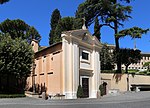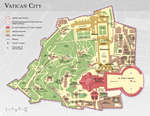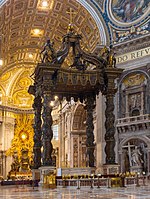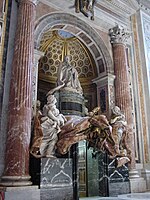Transport in Vatican City
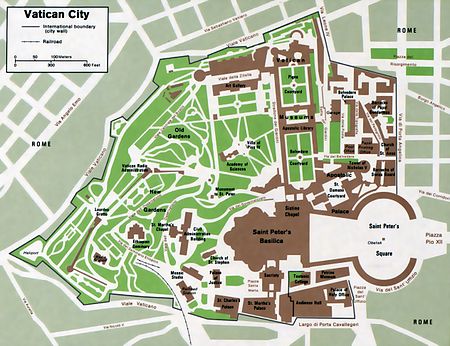
The transportation system in Vatican City, a country 1.05 km (0.65 mi) long and 0.85 km (0.53 mi) wide, is a small transportation system with no airports or highways. There is no public transport in the country. A heliport and a short railway are used for special occasions only. Most visitors will walk from a nearby Italian bus or train stop, or car parking. Given an average walking speed of 3.6 km/h (2.2 mph), Vatican City can be crossed in 20 minutes or less. Thus, much of the infrastructure in the Vatican consists of St. Peter's Square itself, hallways and aisles in the basilica and surrounding buildings, and walkways behind and between the buildings. The Vatican City Heliport is in the western corner of the city-state, and is used only for officials of the Holy See and official visitors.
Excerpt from the Wikipedia article Transport in Vatican City (License: CC BY-SA 3.0, Authors, Images).Transport in Vatican City
Railway Station Square,
Geographical coordinates (GPS) Address Nearby Places Show on map
Geographical coordinates (GPS)
| Latitude | Longitude |
|---|---|
| N 41.900833333333 ° | E 12.451111111111 ° |
Address
Città del Vaticano
Railway Station Square
00120 , Vatican City
Vatican City
Open on Google Maps
